Don’t treat your content passively.
To get the most out of the resources you put into creating content, you have to share it.
The right sharing strategy can boost your content’s effectiveness and engage with users it might not otherwise reach.
However, each platform is increasingly focused on keeping users within its specific ecosystem, so careful research and planning are key to success in each algorithm and for each audience.
Content sharing is not as simple as reposting content exactly as it appears on your website or blog. Content has to be optimized for each channel or method of distribution.
With platforms so focused on keeping users on their sites, is there hope for using them to generate traffic? Yes, and here are some tips I’ve found helpful.
3 Tips To Help Funnel Platform Users To Your Site
Map The Audience Journey
An audience journey map is a visual map of the steps your audience takes as they make a decision to solve a problem or take an opportunity. It outlines the path from initial awareness through engagement and onto conversion, highlighting key touchpoints.
This tool helps understand and address your audience’s needs, motivations, and pain points at each stage, enabling more effective and targeted content marketing, SEO, and PR strategies.
Analyze an audience’s journey online to gain insight into their motivations and touchpoints for gathering information and making a decision about a given pain point or opportunity. Use these touchpoints and motivations to entice users to search your content.
I find most journey map templates difficult to implement, so I created a new type of audience map template that allows marketers to turn audience insight into an integrated PR and SEO plan.
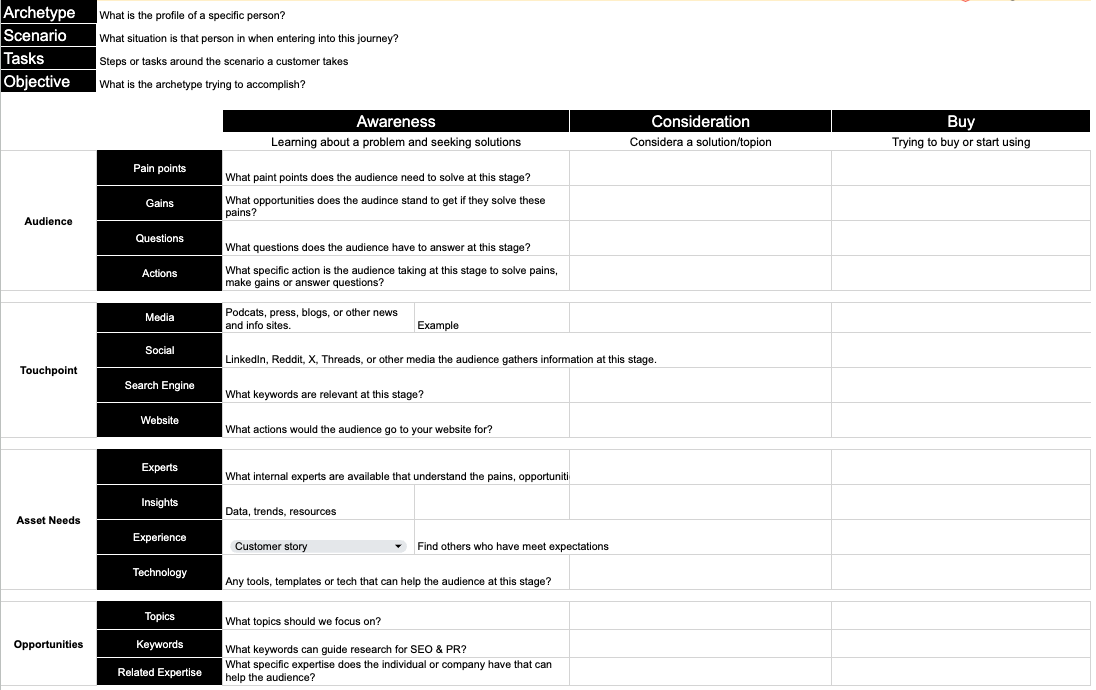 Screenshot from author, March 2024
Screenshot from author, March 2024Using the audience journey, identify assets based on the audience’s needs at various journey steps. These steps provide opportunities to entice users to search for your content in Google or even type the URL directly into the browser.
Owned Asset Marketing (OAM)
Instead of sharing blog posts or article links directly, create a unique asset with a unique value proposition (UVP) for a specific audience or archetype. Then, optimize that asset for different channels or platforms.
I call this owned asset marketing (OAM).
I reached out to Amanda Natividad, VP of Marketing at SparkToro, who put it like this: “Beat the platforms at their own game and publish zero-click content. Zero-click content is content that offers standalone insights with no need to click. Clicking might be additive, but it’s not required.
This means summarizing conference presentations into shorter LinkedIn posts, taking one key idea from a webinar and writing it as a Threads post, or repurposing a blog post entirely into a video tutorial on YouTube.”
Studies, research, uniquely valuable resource lists (e.g., tools), training courses, expert commentary, or framing on a complex topic identifying an opportunity are all types of assets that can be converted to zero-click content.
For example, I recently launched a Mini MBA about Integrating PR & SEO. As part of the course, I created templates, checklists, how-to videos, and case studies to help marketing leaders integrate their internal PR & SEO teams.
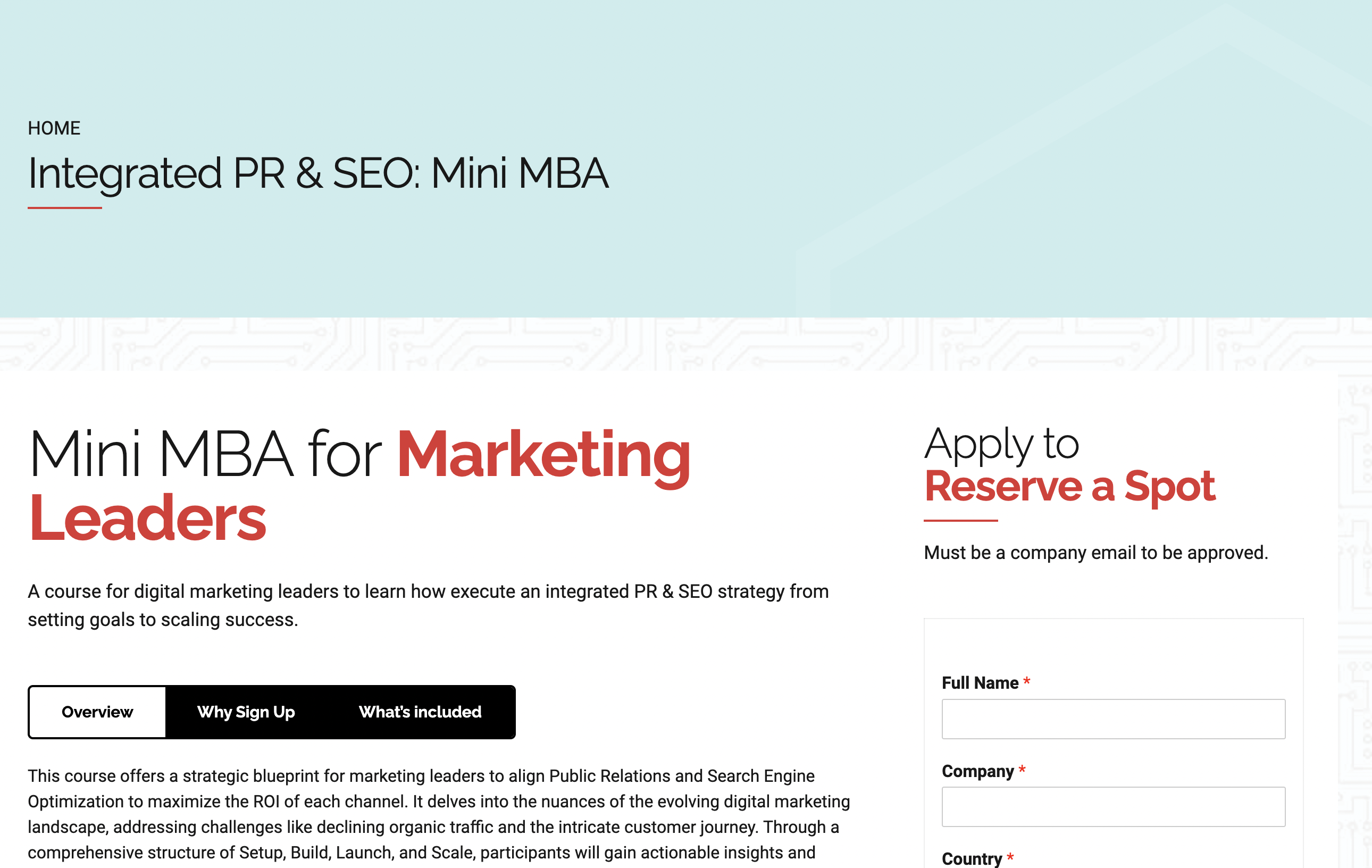 Screenshot from author, March 2024
Screenshot from author, March 2024However, I don’t just share the course online; I repurpose the content to share on social or in my guest articles. The audience map template above is a repurposed asset from my course.
I also had my research team analyze the impact of brand mentions on a site’s ability to rank in the top 3 of Google for the course. I then took the charts and created a unique post on LinkedIn.
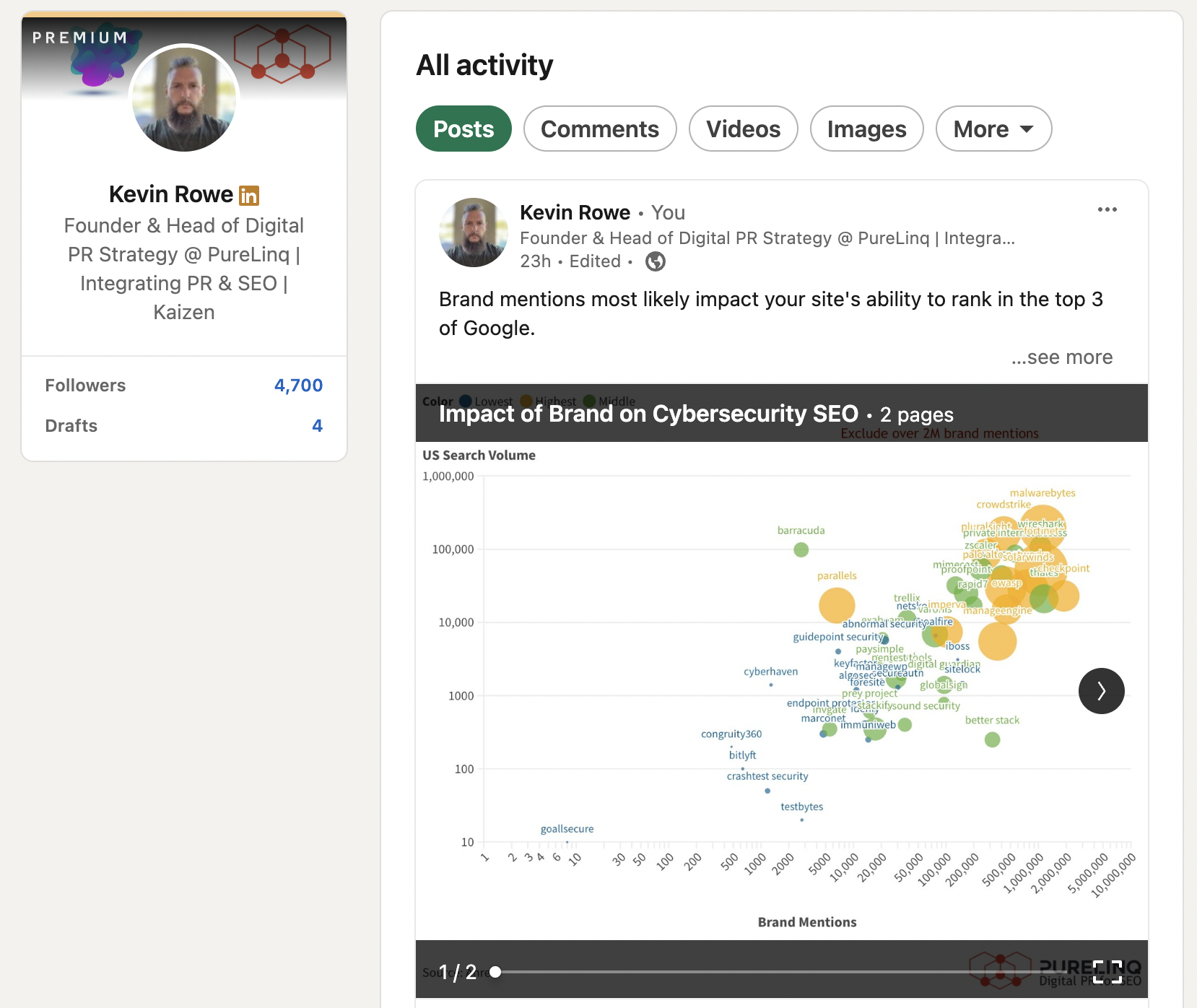 Screenshot from author, March 2024
Screenshot from author, March 2024With touchpoints identified across the audience journey and potential asse ideas, distribute the content in a way that drives the audience to search your content. A PR topic tour can help with that.
Use A PR Topic Tour
A PR topic tour is a strategy that focuses on identifying a trending topic and creating a media tour to share an asset: commentary, data, resources, or unique insights about that topic.
The more an audience engages with you about a topic, the more likely they are to search your content or website when they are investigating the topic. This is because they begin to see you as an expert source on the subject.
Here’s the gist of how to create a PR topic tour:
- Identify an industry or media trend: Analyze the last six months of media coverage on a topic to identify recent trends. Use Google News, relevant social media (e.g., LinkedIn or Reddit), or BuzzSumo to find a list of trends.
- Identify topics: Identify topics that you have an asset about or to create a new asset for.
- Create or Optimize an asset: Create a unique asset related to the trend or optimize an existing one for different platforms.
- Pitch or distribute at audience touchpoints: Create a list of podcasts, journalists, op-ed sites, relevant social communities, and even blogs to pitch various story angles based on the audience or opportunities in each platform.
A PR topic tour is a great way to establish an individual or company as an expert in a specific topic.
I recently created a PR topic tour case study about Rand Fishkin’s concept of an “influence map.”
In 2021, Fishkin wrote an article, Influence Maps—The Best Marketing Framework You’ve Never Heard Of, for a concept he created.
Fishkin started to cover the topic on podcasts, webinars, and social. Here’s just a sample that I found and included in my case study:
- Webinar on Crowd Content, discussing an influence map in a webinar about content marketing.
- Twitter posts about “What is an influence map.”
- The Ungagged Conversations podcast about SEO.
- The Marketing Plan Podcast is a talk about digital marketing.
When determining places to distribute your content, consider using these tips to determine the best method and touchpoints to include.
Here is a short list of places to share your topic tour concept, from the mainstream to the niche.
1. Substack
Substack is a platform that enables writers to publish newsletters and monetize their content directly through subscriptions.
Substack has over 20 million active subscribers.
Creators write posts using Substack’s editor, publish them, and then email them to subscribers. Creators can earn money through paid subscriptions, which offer them financial support directly from their audience and facilitate a direct writer-reader relationship without the need for advertisements or sponsorships.
Setting up a newsletter through substack is very easy:
- Sign up: Create an account on the Substack website.
- Set up your newsletter: Choose a name for your newsletter, customize its appearance, and set up subscription options (free, paid, or both).
- Create content: Write your articles or newsletters directly in Substack’s editor and format them as desired.
- Publish and promote: Publish your newsletters and share them on social media or other platforms to attract subscribers.
- Engage your subscribers: Interact with your readers through comments and feedback to build a community around your newsletter.
2. LinkedIn Newsletters
A LinkedIn Newsletter is a feature that allows LinkedIn users to regularly publish and send a series of articles to their followers directly through LinkedIn.
LinkedIn Newsletters are highly underrated. When you launch a new newsletter, you can notify all of your followers at once, giving you instant access to thousands of subscribers.
However, you have to be eligible for the LinkedIn Creator hub.
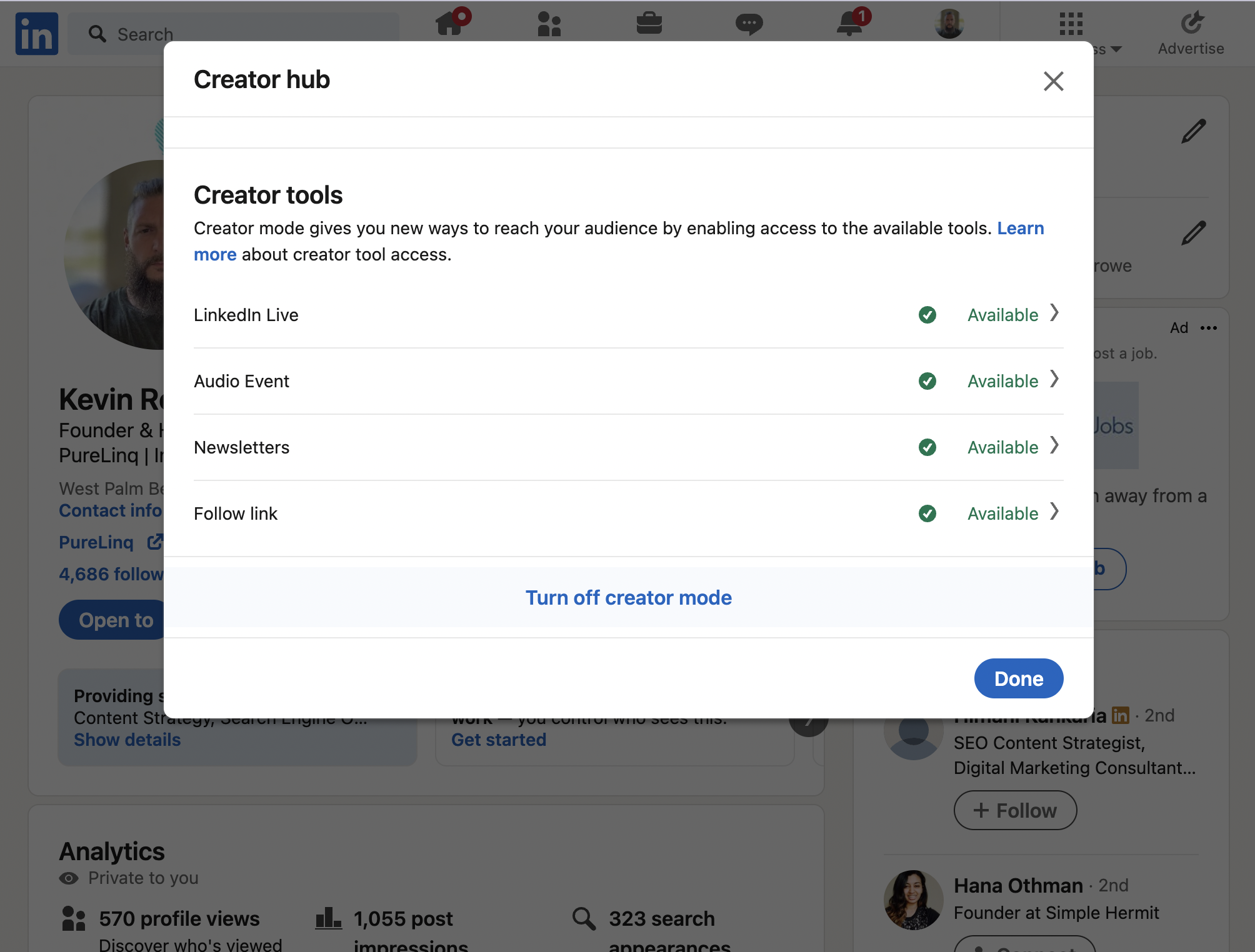 Screenshot from LinkedIn, March 2024
Screenshot from LinkedIn, March 2024- Access: Go to your LinkedIn homepage and use the Write an article option.
- Select “manage”: Under the Manage button in the article writing interface, select Newsletter.
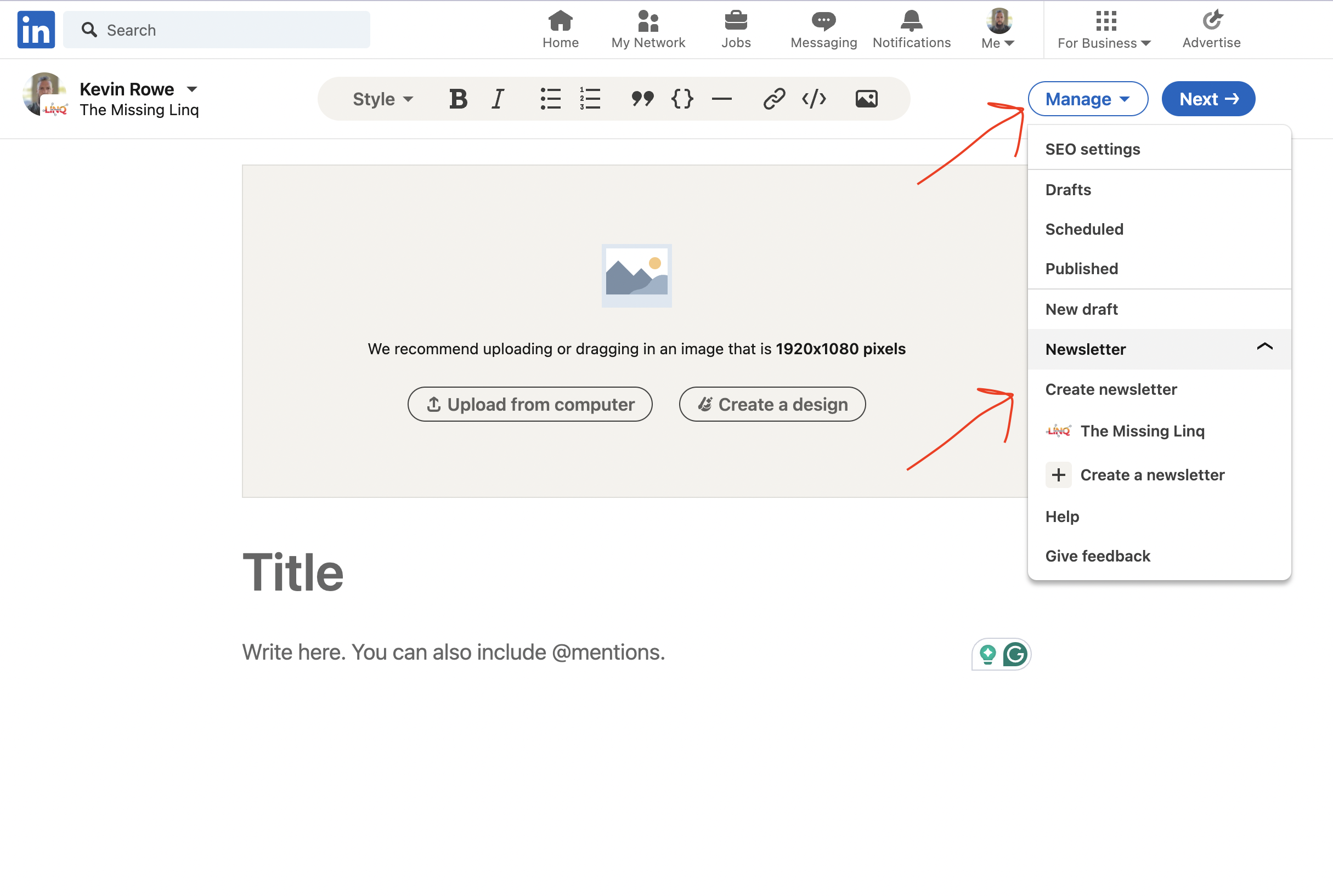 Screenshot from LinkedIn, March 2024
Screenshot from LinkedIn, March 2024- Create or select: Either create a new newsletter or select one you already have. If you create one, then just name it, provide a description, upload a logo (I recommend a logo and branding for your newsletter), and then click Done.
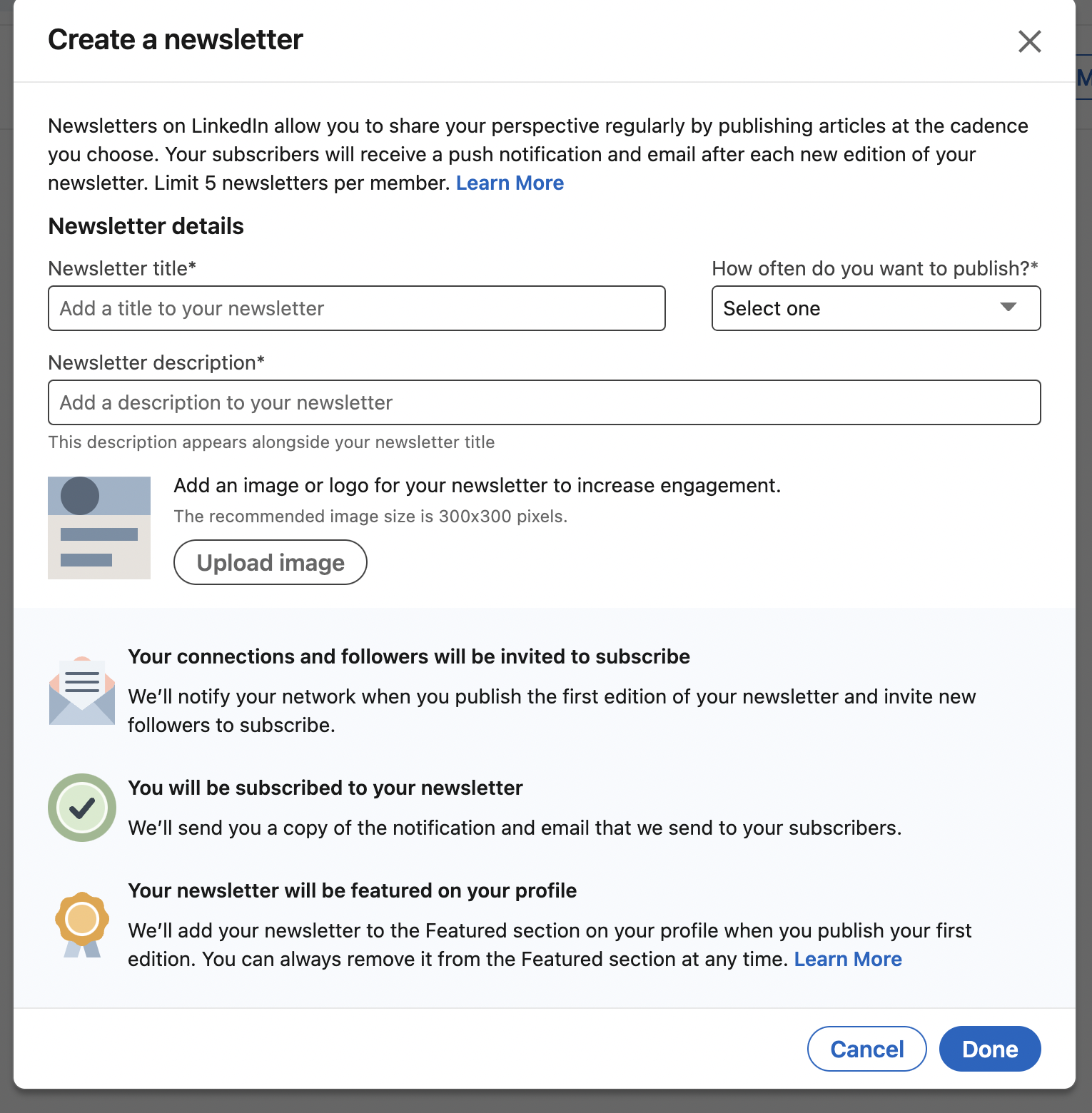 Screenshot from LinkedIn, March 2024
Screenshot from LinkedIn, March 20243. OnePitch
OnePitch is an AI-based journalist pitching tool and is one of my favorites for media relations. However, your pitches have to be really targeted and strong to secure media coverage.
I use OnePitch for:
- Write a pitch: Write a pitch for an interesting story idea. A pitch can be for data or expert commentary on a trending topic, a product launch, or another other newsworthy story.
- Upload pitch: Use the editor to upload and parse the pitch.
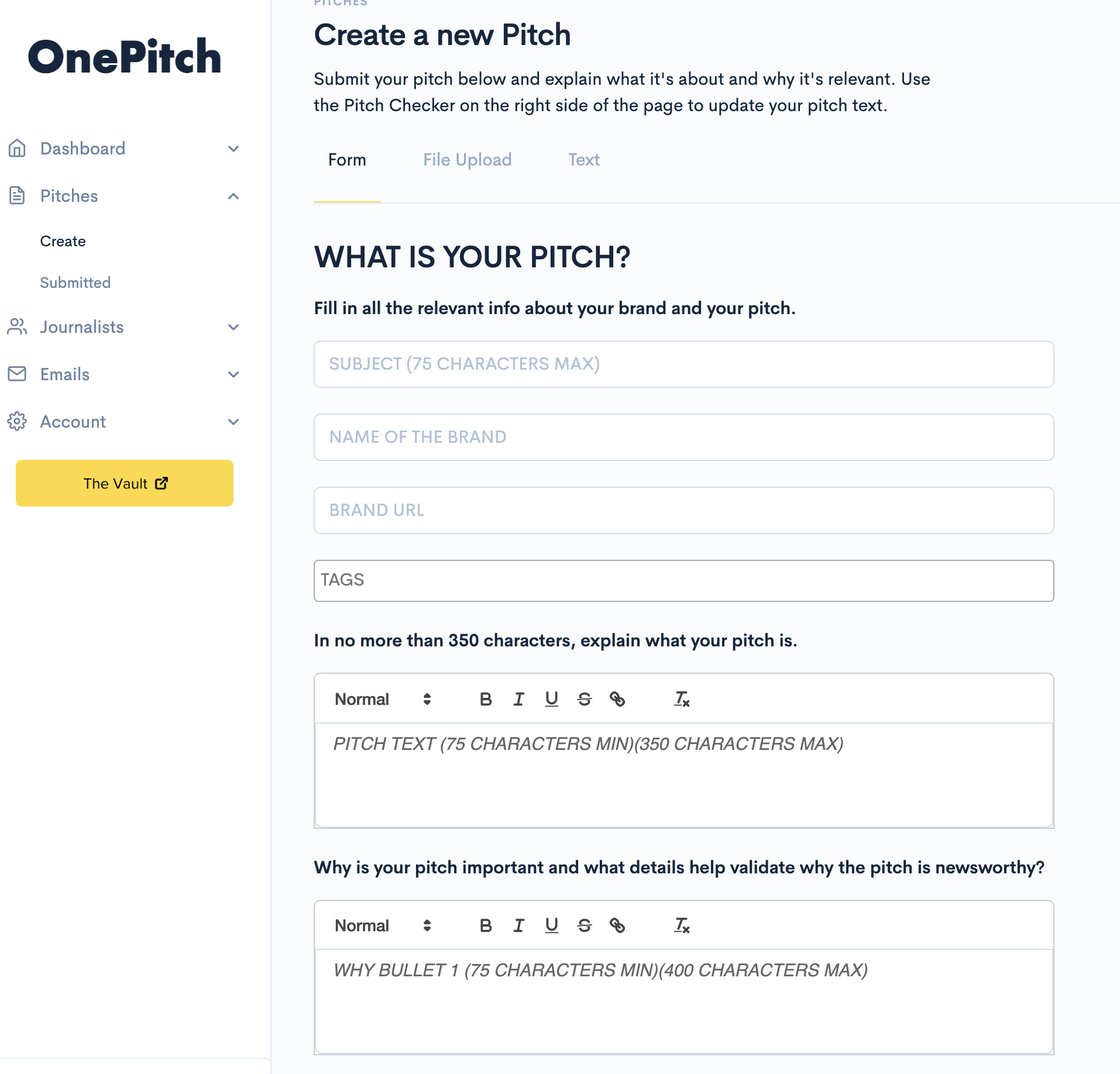 Screenshot from OnePitch, March 2024
Screenshot from OnePitch, March 2024- Use AI to build a list of journalists: After you submit the pitch, OnePitch uses AI to identify a list of journalists who have written about similar topics.
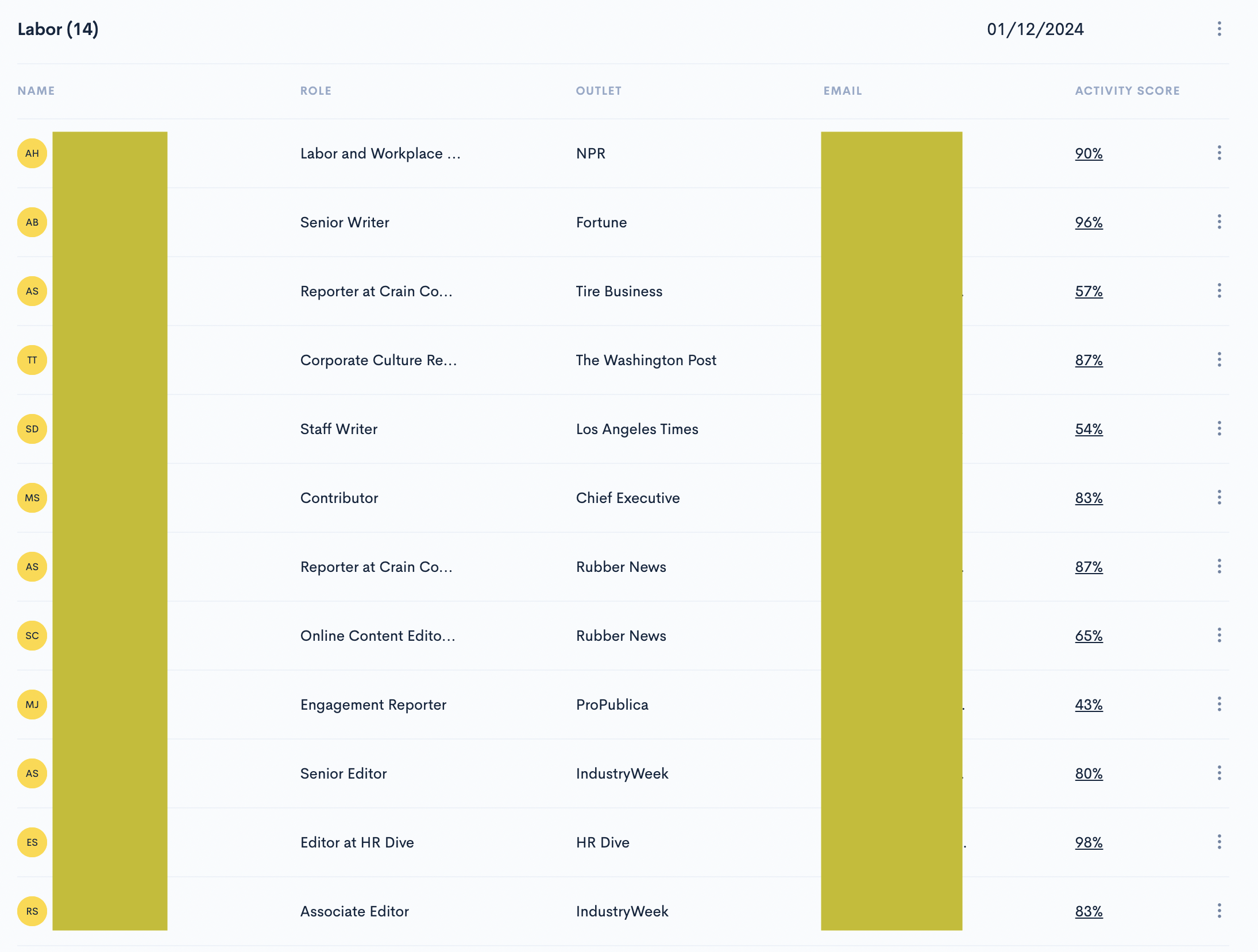 Screenshot from OnePitch, March 2024
Screenshot from OnePitch, March 2024- Pitch: Submit a pitch using the tool, which will email the journalist through your email address.
4. Medium
Medium is an online publishing platform where any writer can share their content. It’s useful for those looking to publish their thoughts, stories, and ideas on a wide range of topics through direct republishing or creating new, unique stories or assets.
Medium articles can also rank well on Google if they are unique pieces.
Medium allows you to republish your existing blog posts (if you use their import feature, they even add a rel=canonical link), but you can also use this platform to increase traffic to the full blog posts on your site.
To post on Medium:
- Sign up: Visit Medium’s website and sign up using email, Google, Facebook, or Apple.
- Set up profile: Complete your profile by adding a photo, bio, and other details.
- Write: Click on your profile picture, then Write a story to start drafting your post.
- Edit and format: Use the editor tools to format your text and add images or links.
- Publish: Once satisfied, click Publish at the top, choose tags, and then “Publish” again to share your post with readers.
5. Reddit
Reddit is a network of communities called subreddits, each focused on different interests, topics, or themes. Users can share news, content, and opinions, engage in discussions, and vote on content. It’s a place for finding trends, advice, and varied perspectives on almost any topic.
And if you haven’t heard, Google has been ranking Reddit content in the top spots more frequently and recently announced a deal to show more Reddit content. So, posting on subreddits can gain additional exposure or traffic directly to your content if you can get a link posted in a thread that ranks well in Google.
Finding relevant subreddits can be overwhelming, but try using SparkToro to simplify the process. This tool allows you to find subreddits based on the audience you want to target.
You can search based on a link to a site, social profile, or keywords your audience uses and then find subreddits that the audience also visits.
- Setup SparkToro: Sign up for a free account or one of the paid subscriptions.
- Select a seed list: Create a list of social profiles, websites, keywords, social profile descriptions, or hashtags that the audience uses.
- Select a version of SparkToro: Currently, SparkToro has two versions. V1 just lets you find subreddits, but V2 allows you to search comments.
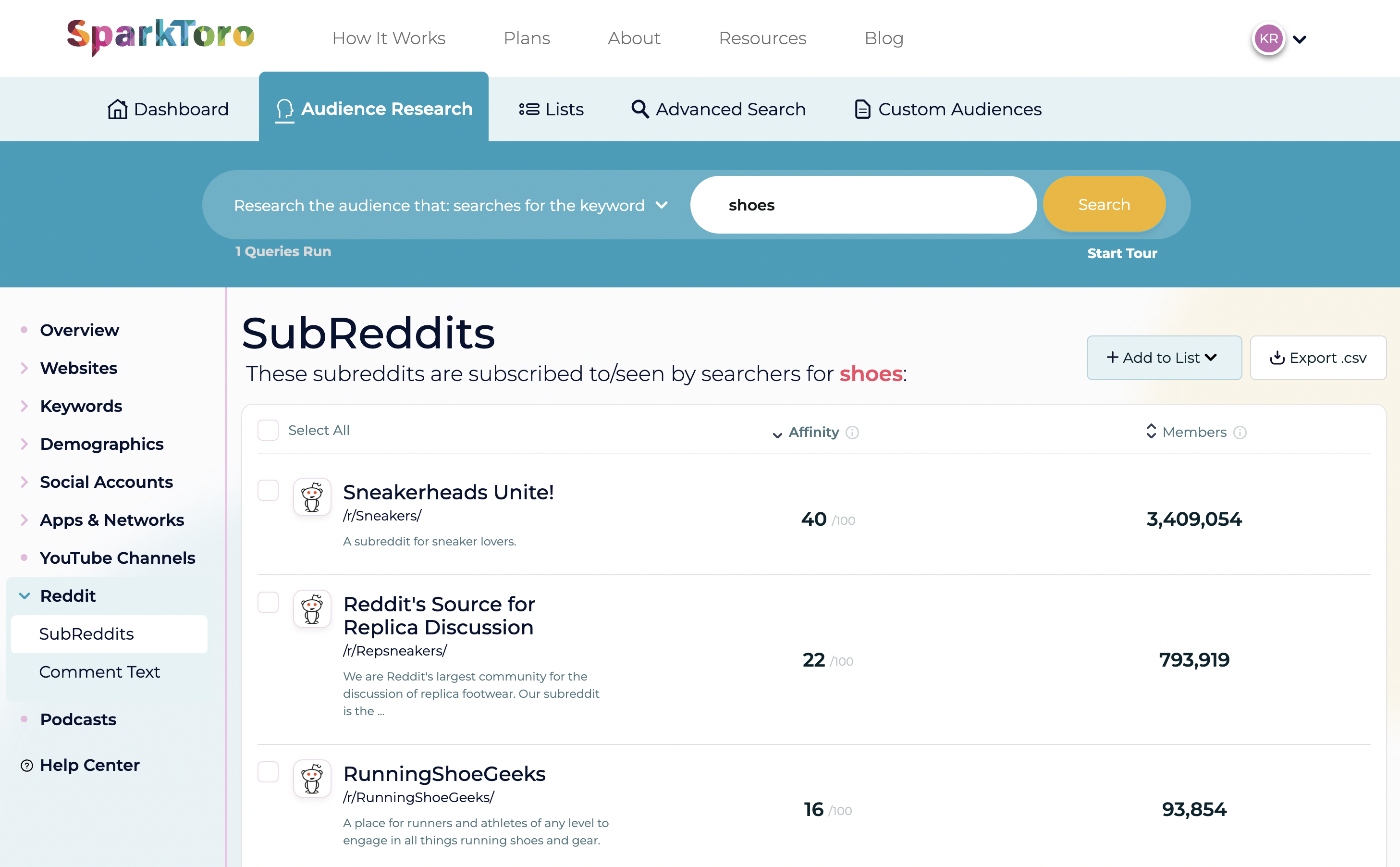 Screenshot from Reddit, March 2024
Screenshot from Reddit, March 2024- Post on the subreddit: Share content on a subreddit as a personal account and ensure the content creates some unique value for the audience. You can create a new thread or post a comment on existing ones.
Redditors are very conscious of brands attempting to “spam” subreddits with their own content, so this is usually best left to a few employees with active Reddit accounts who may occasionally share company blog posts once or twice a month.
6. LinkedIn Articles
A LinkedIn article lets you publish longer content directly on LinkedIn, which is shared with your followers and potentially a wider LinkedIn audience through the platform’s network effects.
When you publish an article, it appears on your profile and can be seen in the feed of your connections or followers, increasing its visibility. LinkedIn also sometimes distributes articles more broadly based on their relevance and interest to other users beyond your immediate network.
Just like with the LinkedIn newsletters process, you can create a long-form article and post it to your feed.
 Screenshot from LinkedIn, March 2024
Screenshot from LinkedIn, March 2024In the article post editor, just click next instead of creating a newsletter.
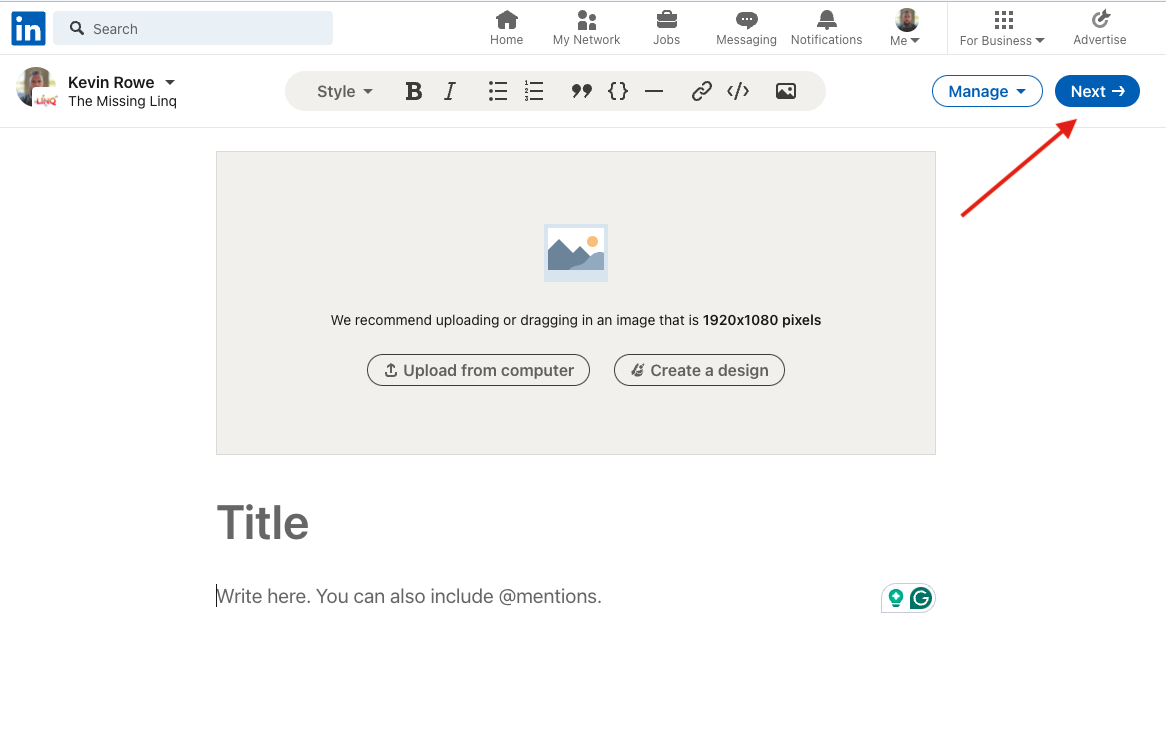 Screenshot from LinkedIn, March 2024
Screenshot from LinkedIn, March 20247. LinkedIn Personal Posts
LinkedIn posts are highly underrated. As you can see from my personal LinkedIn post below, I received over 57,000 impressions from a single post.
I don’t need to walk you through the posting process on LinkedIn, but note that a post’s reach can be very large.
A few quick tips that help me are:
- Use data and charts in posts to increase engagement.
- Focus on topics that you’re an expert in.
- Use documents that can entice the audience to engage with your post. Engagements seem to increase reach for me.
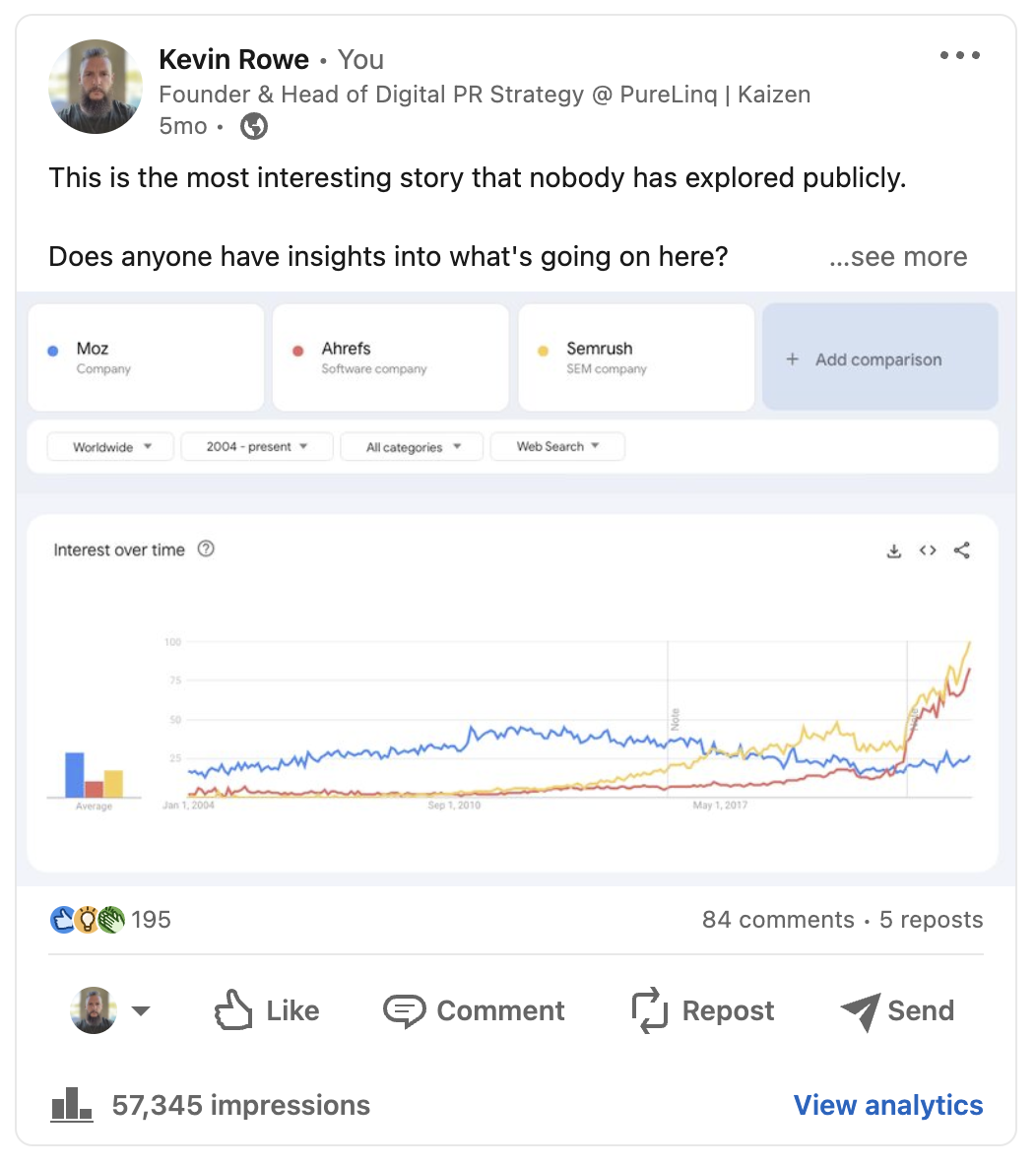 Screenshot from LinkedIn, March 2024
Screenshot from LinkedIn, March 20248. Forbes Councils
The Forbes Councils is a collective of invitation-only communities created by Forbes. Members are selected from various industries and can publish articles on Forbes.com, networking with other leaders.
If you do get approved, you can publish articles every month on a topic that you are an expert in.
And as of the time I wrote this, these articles rank really well in Google. As you can see in the screenshot of Google for the keyword [seo and public relations].
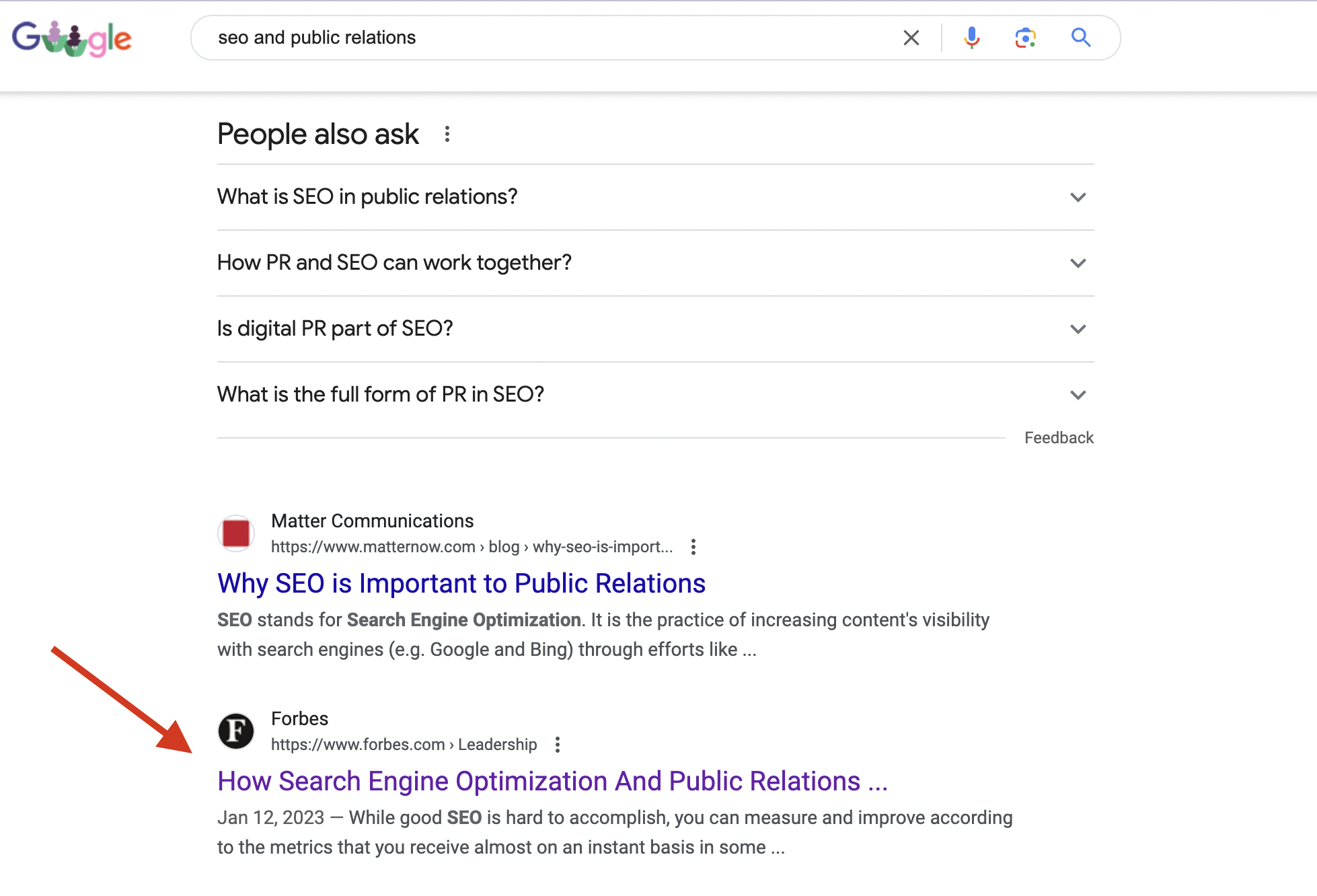 Screenshot from search for [seo and public relations], Google, March 2024
Screenshot from search for [seo and public relations], Google, March 20249. Email
Promoting your content through email is an “oldie but goodie” tactic that still pulls major weight.
59% of consumers say marketing emails have influenced their decisions to make a purchase.
I personally use a few email tools: MailChimp, Apollo.io, and PitchBox. Each has a different application.
I’ll focus on Apollo here as it has a built-in contacts database, and I find the UI very easy to use. You can also upload your own list of contacts or use their database to build a new list.
In the tool, you can create automated sequences that work well for sharing informational content related to a theme or topic.
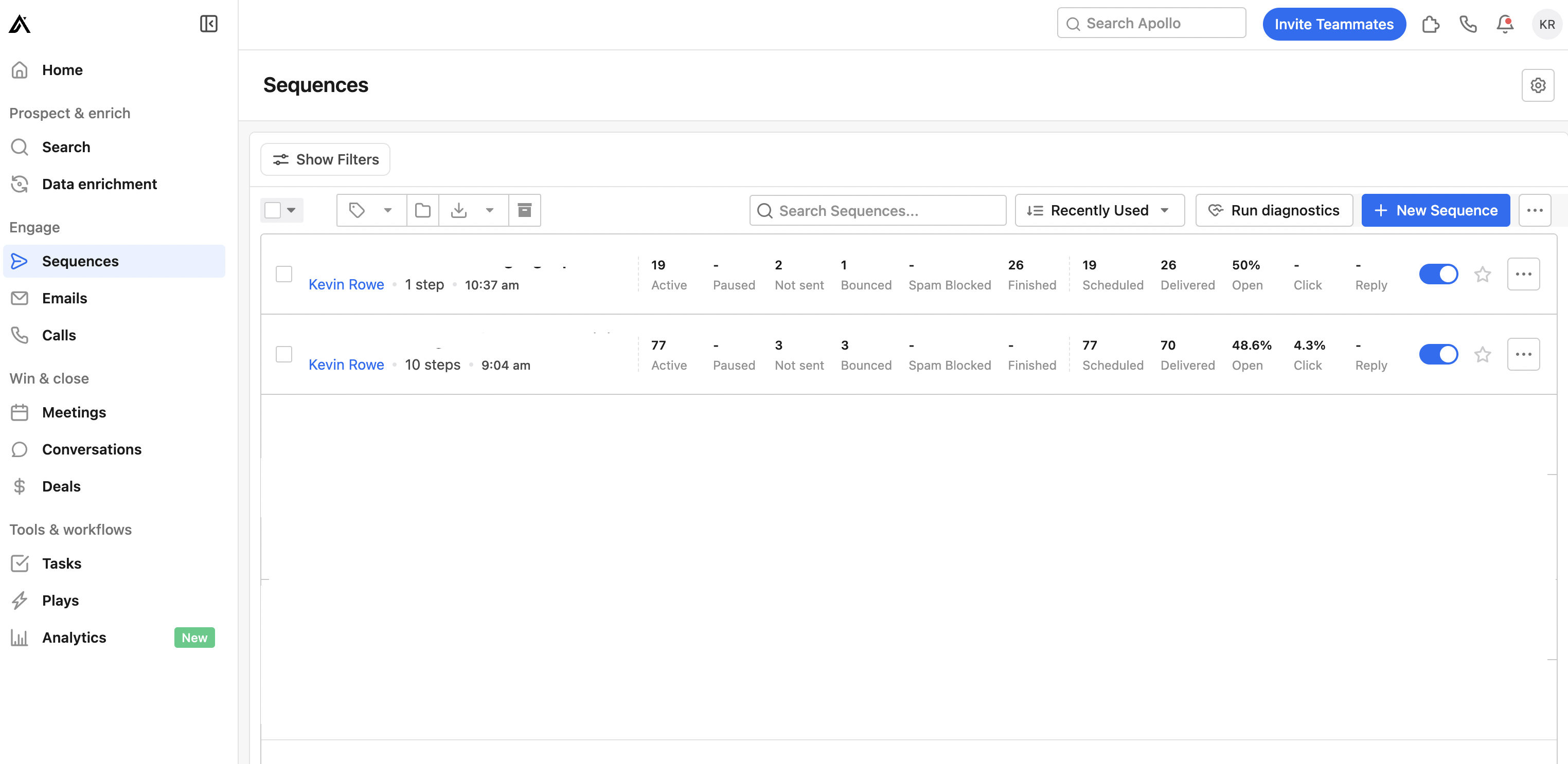 Screenshot from Apollo, March 2024
Screenshot from Apollo, March 202410. DZone
DZone is an online community and publishing platform where technology professionals and developers share articles, tutorials, and news about software development, programming languages, and emerging tech trends.
It serves as a repository of technical knowledge, offering insights, code snippets, and discussions aimed at helping developers and tech enthusiasts stay updated with the latest in technology and software development practices.
On DZone, you can post a wide range of technical and programming-related content, including tutorials, guides, articles, and news updates covering various aspects of software development, programming languages, DevOps, cloud computing, and more.
It’s aimed at helping developers, programmers, and technology professionals share knowledge and learn from each other.
To post content on DZone, you need to become a community member. Once you’re a member, you can submit articles through its submission process, which involves creating content that aligns with their guidelines and submitting it for review. If approved, your content will be published on the platform.
11. X (Twitter) Personal Accounts
X (Twitter) has changed significantly over the last few years since Elon Musk purchased the platform. Some platform users have said they have seen a drop in engagement over the last few years, but others have seen an increase.
Sharing on X isn’t overly complex, but to garner the largest reach, don’t just share your links but create unique content for the platform. Share images or videos directly with unique content.
12. Personal Page On Facebook
This one seems obvious, but it is a place many people forget.
If you are concerned about spamming your family or friends who aren’t in the industry, consider creating a Facebook list for work folks.
This way, you don’t have to worry about confusing your Great Aunt Gertrude with a step-by-step guide to PPC.
13. Facebook Groups
Facebook Groups are still alive and well! Because many users already use Facebook in their personal time, they are usually more active in Groups.
Join a few industry-related Groups, share your best content once a month, and contribute to the group when possible.
Be sure to stay active as a member of the chat or Group by answering questions, reading others’ content, and contributing genuinely to the Group.
14. Slack Communities
Niche Slack communities are popping up everywhere. I find that these communities are very active.
However, the community guidelines on posting tend to be very strict. Many communities limit the type of content you can post, and typically, you won’t be able just to share links to your content.
To share on Slack Communities, share unique data or insights directly in the community where the threads create their own unique value and engagement instead of trying to get users off the platform.
15. SlideShare
SlideShare is a platform that allows users to share slide presentations, infographics, and other professional content.
It’s a valuable resource for professionals looking to learn new skills, share insights, and present ideas in a presentation format. Users can upload content in various formats, making it accessible to a wide audience for educational, marketing, and informational purposes.
One way to get the most mileage out of your content is by taking highlights and turning them into a presentation for SlideShare.
16. Quora
Quora has been around forever and is known as the internet’s premier question-and-answer website.
Users post a question, and users answer that question. Pretty straightforward.
But when you consider that a business or a representative can research what kind of questions customers are asking and have a detailed blog post ready to answer it, it becomes a great opportunity.
Knowing what your audience is having a problem with can help give you great ideas for content that will drive traffic to your site.
For example, if everyone is asking for information about how to hang a picture on a wall, and you sell the best picture-hanging nails ever, why not flex some of your expertise on the matter?
You get to personally answer a potential customer’s question while providing a handy link to your blog’s detailed explanation of it.
17. Growth Hackers
Most businesses want to scale to take on more work and overcome new obstacles.
Growth Hackers is an online community of user-generated content that provides insights on any topic that can be done to increase your company’s size, revenue, customer base, lead generation, etc.
Every article is detailed and insightful to many different niche industries. Make your voice heard while shining a light on the many ways you are trying to grow your business. It is well worth it.
18. Flipboard
Flipboard is a neat app that condenses the internet into digestible bite-size blocks. It shares content from every major publication you can think of and targets it to the people who are looking for it.
Creating an account and posting your content is a great way to drive traffic directly to your blog. It is also a great way to keep track of industry insights and even your own social media feeds.
What really sets this apart is its simplistic interface, which is backed by some serious clout, algorithmically speaking.
19. Scoop.it
Boasting organic traffic with over 2 million monthly users, Scoop. has become a powerhouse platform for marketers.
Offering content curation software, it helps marketers find authoritative content in their industry, which can then be easily shared on social media.
You can post your content in the hopes that others will also see it and share it with their followers.
Everyone wants to share their content with the world, and this tool makes it easy. It is also a great way to come up with new topic ideas based on what is trending.
20. Listly
Listly is a platform that allows users to create, share, and engage with lists on various topics.
These lists can include items like articles, products, resources, or ideas that other users can vote on, add to, and comment on. It’s designed to facilitate collaborative list-making and sharing, making it easier to collect and discover crowd-sourced information on specific interests or themes.
 Screenshot from Listly, March 2024
Screenshot from Listly, March 2024Sign up for the community, and you’ll be able to post immediately.
21. Threads
Threads is a new social media app developed by Meta, the company behind Facebook, Instagram, and WhatsApp. The app is a direct competitor to X (Twitter).
Threads reached over 100 million users in the first 5 days of being live. However, according to Sensor Tower, the daily active user count was down 82% around July 31st.
Natividad recommended Threads for sharing links directly, saying: “I don’t believe we’ve seen evidence that links are buried in Threads’ algorithm. For now, that seems to be a decent place to drop links in posts. But arguably, one of the best places to include links in your posts is Mastodon, which offers a chronological feed, not an algorithmic one.”
22. Mastodon
Mastodon is a free, open-source social networking platform emphasizing decentralization, privacy, and freedom from corporate control.
Unlike traditional social media platforms like Twitter or Facebook, Mastodon is built on a network of servers, each with its own rules, policies, and community.
As of February 2024, Mastodon had over 8 million users. Once you have your lists created, you can publish them to your audience.
Summary
Natividad provided further clarity, saying: “Social platforms notoriously want to keep us on-platform, so if you’re optimizing for sheer impressions of your ideas, rewriting your content as a fully formed LinkedIn post or a longform Twitter/X post is, sadly, your best bet.
For instance, when Twitter/X changed to the current ownership and they open sourced their recommendation algorithm, users saw proof that links in tweets were penalized and thus, suppressed by the algorithm.”
Content sharing across various platforms requires more than just replication; it demands strategic optimization and understanding of each platform’s unique dynamics.
Content creators can significantly enhance the visibility and impact of their work by employing targeted strategies such as mapping the audience journey, creating optimized assets, and leveraging PR topic tours.
Engaging with platforms like Substack, LinkedIn, and newer entrants like Threads and Mastodon while adapting to their specific content preferences presents a comprehensive approach to not just sharing but amplifying content in a way that resonates and even funnels the audience to your website.
More resources:
- The Top 10 Social Media Sites & Platforms
- 9 Examples of Highly Shareable Content
- Content Marketing: The Ultimate Beginner’s Guide to What Works
Featured Image: Paulo Bobita/Search Engine Journal




